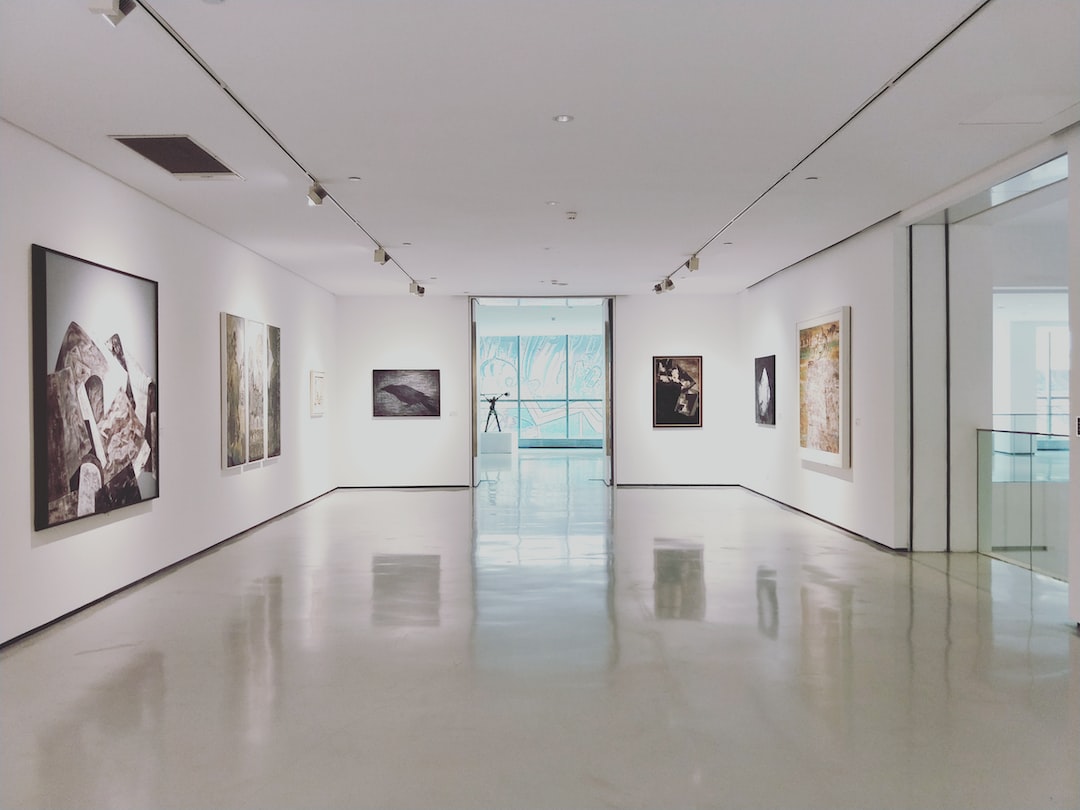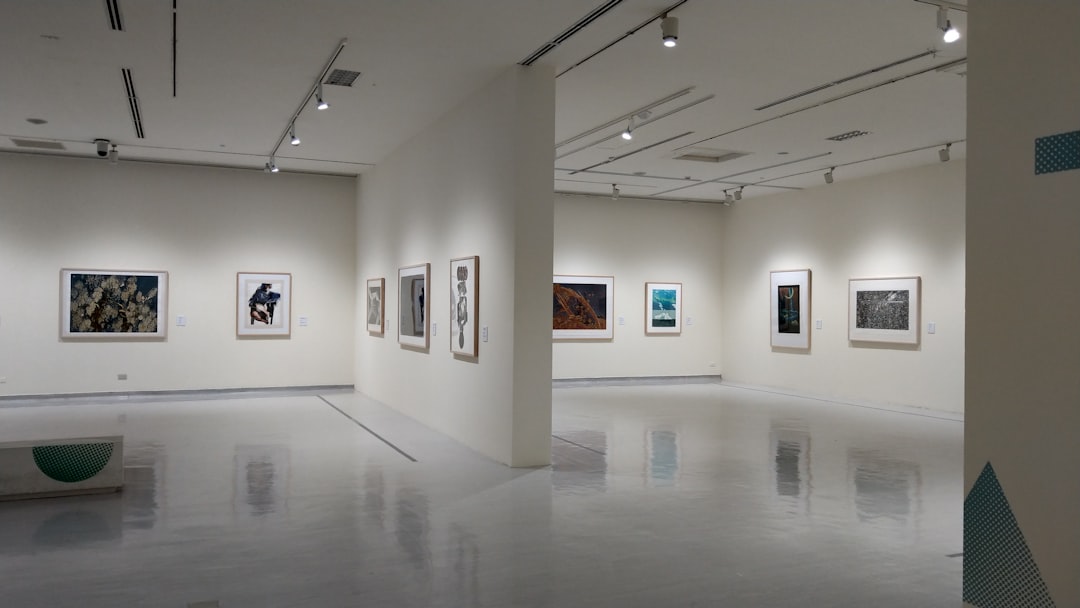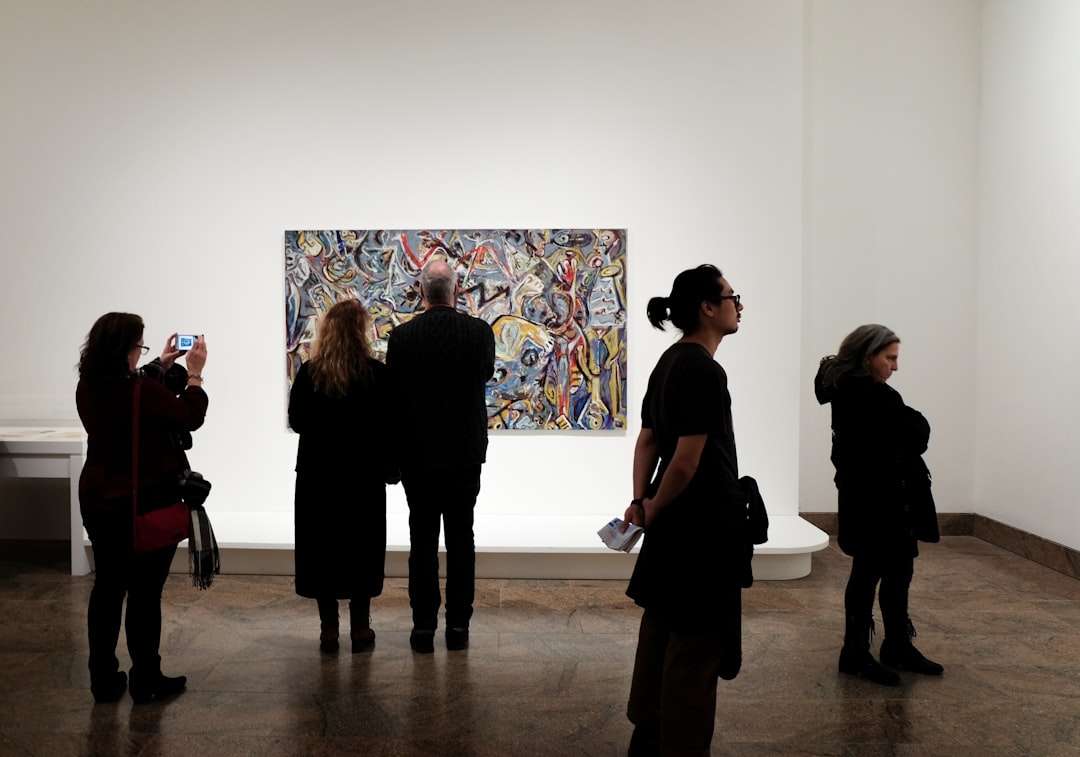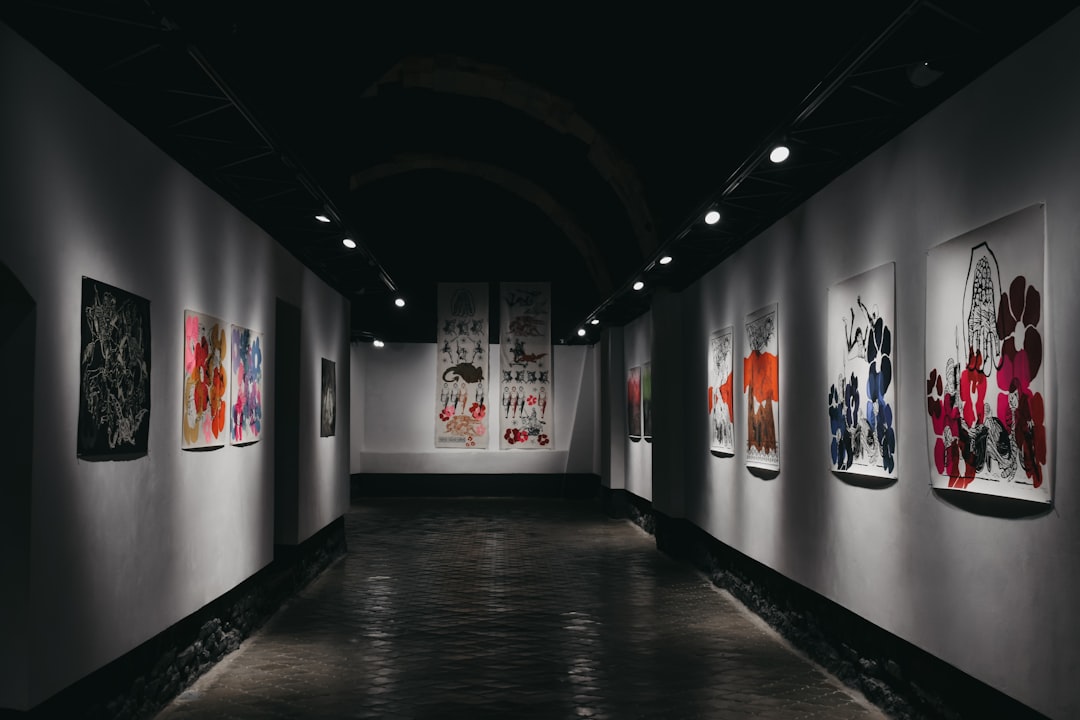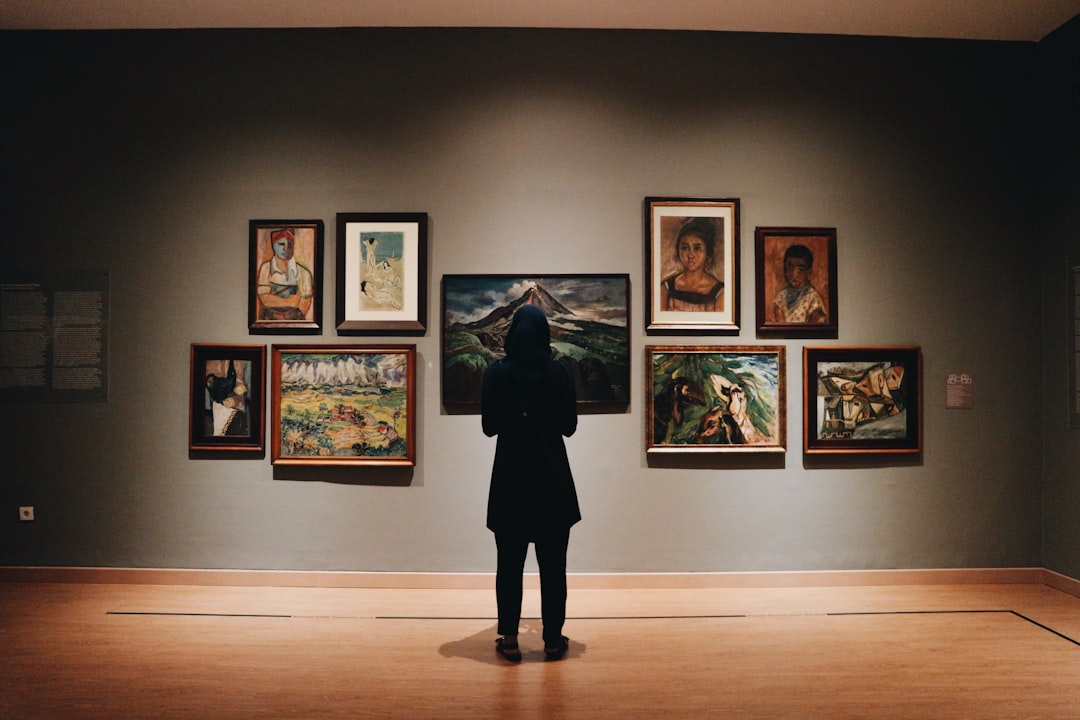Blockchain technology has been making waves in many industries all over the world. Since its inception, it has sought to solve the problem of trust and transparency in digital transactions. It has achieved this by creating a decentralized and secure system that guarantees the accuracy of data and information shared within it.
The world of art is an industry that has been impacted by blockchain technology. The art world has long been plagued by challenges of authenticity, transparency, and ownership, making it difficult for artists to take full control of their creations and monetize them. With the introduction of blockchain technology, however, artists can now enjoy greater autonomy, ownership, and potential profitability.
This blog post aims to explore the impact of blockchain technology on the art world. It will provide insight into how the technology has evolved from analog to digital forms, how it empowers artists to take ownership of their creations, guarantees authenticity and ensures transparency in art transactions. Additionally, it will examine the rise of a new genre of art, crypto art, which has emerged as a result of leveraging blockchain technology.
Overall, this blog post will provide a detailed overview of the potential of blockchain technology in transforming the art world and its future implications. As we explore the different aspects of blockchain technology’s impact on the art world, we hope to help readers better understand the role that blockchain technology stands to play in the future of the art industry.
From Analog to Digital: The Evolution of Art
Technology has always played a big role in shaping the art world. From the invention of the printing press to the rise of photography, each era has seen the emergence of new art forms that challenge our notions of creativity and artistic expression. However, with the advent of blockchain technology, we are witnessing a paradigm shift that is transforming the way we produce, consume, and understand art.
For centuries, art has been primarily a physical medium, confined to the realms of sculpture, painting, and other tangible forms. But with the rise of the internet and digital technologies, we have witnessed a significant cultural shift in the way art is produced and consumed. The digital age has revolutionized the art world, creating new forms of artistic expression that were previously unimaginable.
The development of digital tools and software has allowed artists to experiment with new mediums and styles, giving them a level of creative liberty that was unheard of in the past. While the traditional forms of art will always be important, digital art has become a force to reckon with, attracting both artists and collectors alike.
One of the striking features of digital art is its ability to exist in multiple forms, from a simple computer file to a projection on a large screen. This versatility has opened up new avenues for artists to explore and experiment with, unleashing their creative potential in ways that were previously impossible.
Another significant evolution is the growing preference for digital art among the new generation of art collectors. As technology becomes more integrated into our lives, younger generations are increasingly comfortable with consuming art in digital forms. This has led to a surge in demand for digital art pieces, creating a new market that was previously non-existent.
While the digital era has brought about its fair share of benefits, it has also created new challenges for artists trying to protect their creations. With the ability to easily copy, modify, and distribute digital art, the issue of copyright infringement and piracy has become a growing concern in the industry. Blockchain technology can help address these issues, creating a secure platform for artists to showcase their work, verify ownership, and control access.
In conclusion, the evolution of art from analog to digital forms has opened up new horizons for creative expression, challenging our established notions of what art is and what it can be. Blockchain technology is poised to revolutionize the art industry by providing artists with a platform where they can take ownership of their creations, monetize them, and protect their intellectual property. The emergence of the new genre of crypto art is just the tip of the iceberg, signaling a bold new era for the art world that is both exciting and full of potential.
This versatility has opened up new avenues for artists to explore and experiment with, unleashing their creative potential in ways that were previously impossible.
Empowering Artists: How blockchain technology can help artists take ownership of their creations and monetize them
Blockchain is known as a game-changer in many industries, including the art world. It is enabling artists to take ownership, control, and monetize their creations, providing them with a level playing field to thrive in the industry. This technology is replacing the traditional middlemen who have dominated the industry for years, bringing transparency and accountability to the art sector.
One of the major advantages of blockchain technology in the art industry is that it ensures irrevocable proof of ownership, protecting the artist’s rights and enabling them to have complete control of their work. With blockchain, artists can create a verifiable digital record of their work that shows the inception, creation process, and history of ownership. This immutable record can be easily accessed and verified by prospective buyers, giving them the confidence to invest in the artwork.
Moreover, blockchain technology enables the artists to monetize their work through a more transparent and efficient system without the need for intermediaries, which can take a significant portion of the profits. Artists can now access the global market, sell their creations directly to buyers, and receive payments instantly.
Another benefit of blockchain for artists is the creation of smart contracts. Smart contracts automatically execute a specific set of tasks when certain conditions are met. By using these contracts, artists can define their terms and conditions of sale and customize them to fit their work’s specific requirements. This ensures that their rights are secured, and any potential disputes are resolved promptly.
Blockchain technology is also creating new opportunities for artists to collaborate with one another. Collaboration allows artists to create unique and extraordinary art pieces that can be commercialized and monetized by each participating artist. The blockchain platform provides the structure for artists to create and sell their joint creations, share revenue, and openly collaborate while still maintaining their rights and ownership of the artworks.
To summarize, blockchain technology is transforming the traditional art industry, empowering artists to take back control of their creations, and monetize them effectively. It is creating a more open and accessible market that directly connects artists with buyers. As blockchain technology continues to evolve, we can expect a revolution in the art world, with more artists having the opportunity to thrive in the industry.
As blockchain technology continues to evolve, we can expect a revolution in the art world, with more artists having the opportunity to thrive in the industry.
Authenticity and Transparency: The Role of Blockchain in Ensuring Authenticity and Transparency in Art Transactions
The art world experiences certain challenges that blockchain technology can help to address. One major issue that has faced the industry for years is the question of authenticity. With high-value art pieces fetching millions of dollars in auctions and private sales, the financial incentive for forgers and counterfeiters is quite high. Blockchain technology helps to provide a solution to this problem by creating an immutable digital record of every art piece created or sold on the platform.
Art industry players can use blockchain technology to create unalterable digital certificates of authenticity that prove an artwork’s lineage and ownership. This information can be securely stored and tracked across the entire art supply chain, from the artist’s studio through to gallery exhibitions and art collectors’ homes. Anytime an individual purchases a piece of art, they can verify its authenticity by accessing the digital certificate stored on the blockchain.
Furthermore, blockchain technology increases transparency in the art industry. The art market has often been criticized for its lack of transparency, with many transactions happening behind closed doors. With blockchain technology, however, it becomes possible to track every transaction and verify the parties involved in any art trade.
By leveraging blockchain technology, art collectors and investors can gain a better understanding of an artwork’s true value. They can also identify any fraudulent activity and avoid being duped into purchasing fake art pieces. Art market intermediaries such as galleries and auction houses can also benefit from blockchain technology by making their operations more secure and transparent.
In conclusion, the application of blockchain technology in the art world has the potential to revolutionize the industry. By enhancing the authenticity and transparency of art transactions, blockchain technology can help to build trust and confidence in the industry. The next section will explore the rise of crypto art, a new form of art that is enabled by blockchain technology.
With high-value art pieces fetching millions of dollars in auctions and private sales, the financial incentive for forgers and counterfeiters is quite high.
The Rise of Crypto Art
As blockchain technology continues to evolve, it has given rise to a new genre of art known as crypto art. Crypto art represents a major advancement in the world of digital art, offering artists new ways to monetize their work and connect with their audiences.
Unlike traditional art, crypto art is uniquely linked to blockchain technology, which provides a secure and transparent platform for artists to create, sell, and trade their work. The use of blockchain technology allows for the creation of digital art that is scarce, verifiable, and reproducible, giving artists unprecedented control over their creations.
One of the most notable aspects of crypto art is the ability for artists to create and sell unique, one-of-a-kind digital assets. These assets, known as Non-Fungible Tokens (NFTs), are stored on a blockchain and can be bought and sold just like physical artwork. This allows for artists to monetize their work in new and creative ways, as buyers can acquire ownership of a unique piece of artwork that can never be replicated.
Moreover, the use of blockchain technology in the creation and sale of crypto art also adds a layer of transparency and authenticity to the art world. All transactions involving NFTs are recorded on a blockchain, ensuring that the provenance of the artwork can be traced back to its original creator.
The rise of crypto art has also paved the way for new marketplaces, galleries, and auction houses that specialize in digital art. These platforms allow for artists to showcase their work to a global audience and facilitate the buying and selling of NFTs securely and efficiently.
In conclusion, the emergence of crypto art represents a significant step forward in the evolution of art and the art market. With blockchain technology offering new ways for artists to create, monetize, and connect with their audiences, the potential for growth and innovation in the world of art has never been greater. As the technology continues to evolve, there is no doubt that we will see more groundbreaking advancements in the art world in the years to come.
Conclusion: Revolutionizing the Art World with Blockchain Technology
As we have explored in the previous sections, blockchain technology has the potential to revolutionize the art world in a multitude of ways. From empowering artists to ensuring authenticity and transparency in art transactions, blockchain technology is proving to be a game-changer in the industry.
Blockchain technology is already enabling artists to take ownership of their creations and monetize them without being dependent on traditional intermediaries. This has led to the emergence of new business models that were not possible before, benefiting both artists and consumers alike.
Furthermore, blockchain technology is tackling one of the most significant issues plaguing the art world: the lack of transparency and authenticity of art transactions. By creating immutable ledgers and secure networks, blockchain technology is providing art collectors and enthusiasts with the means to verify the authenticity of artworks, ensuring that they are not investing in forgeries.
The rise of crypto art is another potential game-changer, as it allows for new forms of art that were previously inconceivable without the help of blockchain technology. By leveraging digital tokens and smart contracts, artists can create unique and valuable art pieces that are inextricably linked to their blockchain addresses.
In conclusion, the future of the art world seems bright with the help of blockchain technology. As this technology continues to evolve and mature, we can expect to see more disruptions in the industry, leading to a more transparent, equitable, and dynamic art market. The potential impact of blockchain technology on the art industry cannot be understated, and it will be exciting to see where this technology takes us in the years to come.
Conclusion: Revolutionizing the Art World with Blockchain Technology
As we have explored in the previous sections, blockchain technology has the potential to revolutionize the art world in a multitude of ways.
Limitations and Challenges of Blockchain Technology in the Art World
Despite the immense potential of blockchain technology in revolutionizing the art world, there are several limitations and challenges that need to be addressed before it can become a mainstream tool for art transactions.
One of the main challenges is the lack of standardization across the industry. Different platforms and marketplaces have their own unique protocols and standards, making it difficult for artists and collectors to navigate the market. Additionally, not all artists and collectors have the technical know-how to navigate the complexities of blockchain technology.
Another challenge is the issue of scalability. As the art market grows and more transactions take place, the blockchain networks could potentially become crowded and slow. This could lead to increased transaction costs and longer wait times for confirming transactions.
Moreover, the immutability of the blockchain, while a powerful feature, also poses a challenge. If a mistake is made in a transaction, it cannot be easily corrected. This could potentially lead to disputes and legal challenges down the road.
Another limitation of blockchain technology in the art world is the potential for fraud. While blockchain technology can ensure transparency and authenticity, it does not completely eliminate the possibility of fraudulent activities. Scammers and hackers could still find ways to manipulate the system, and artists and collectors need to remain vigilant in protecting their assets.
In addition to these challenges, there are also limitations associated with the technology itself. The decentralized nature of blockchain and lack of regulation currently in place may make it difficult for governments and regulatory bodies to monitor and prevent illegal activities such as money laundering.
In conclusion, while blockchain technology has the potential to revolutionize the art world, it is not without its challenges and limitations. These need to be addressed in order for blockchain to become a widely accepted tool in the art world, and artists and collectors need to be aware of these challenges when considering using blockchain for their transactions.
